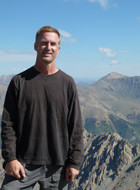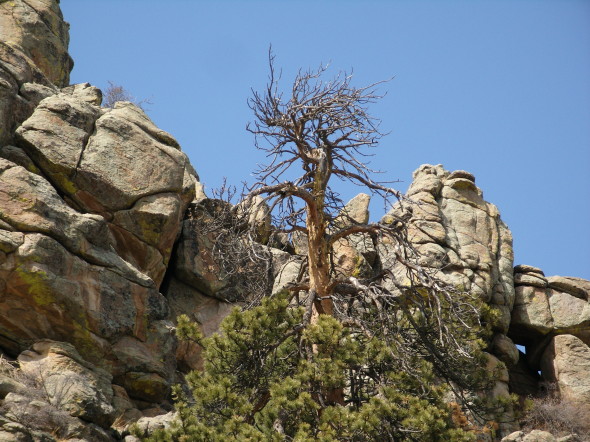

Gaia: Engaging the Rhythms of Our Living Earth
Martin Ogle
September 11–13, 2015
This program has been cancelled.
Relaxation & Connection
It’s no secret that modern life is often too fast, too structured, and too purpose-driven for optimal human well-being. During this healing retreat, we’ll allow ourselves to slow down and rediscover the experiential, emotional and intellectual connections between our selves and the stately, purposeless rhythms of our living planet.
Gaia Theory
The foundation for this retreat is the “Gaia Paradigm”, which understands Earth as a holistic living system of which we are a seamless continuum. “Gaia” is the Greek goddess of Earth; Gaia Theory was originally coined by William Golding – author of Lord of the Flies – to honor the fact that science is rediscovering what many of our ancestors intuitively understood – that the world is alive and we are part of that aliveness.
This nurturing and experiential retreat will explore our relationship with the planet through presentations, nature walks, ”solo-spots,” games, storytelling, poetry, art and more!
An Invitation from Martin Ogle
Interview with Martin Ogle on Gaia Theory
In this interview, Naturalist Martin Ogle discusses Gaia Theory, which is the idea that Earth and everything on the surface of Earth–water, air, rock, and organisms–together form a living system. The minds and bodies of human beings, he says, are a powerful component.
Blog Post: Engaging the Rhythms of our Living Earth Pt 1.
by Martin Ogle
In essence, this upcoming retreat will explore how our human mind perceives and fits in with where it came from! If we accept that our physical bodies evolved from this planet, it is a short leap to understanding our minds as originating from the same source. We are the conscious awareness of Earth! In this, the first-of-two blog posts, I introduce the scientific idea of Earth as a living system, setting the foundation for a second installment that will more fully tie our human awareness to rhythms of our planet.
In the 1960s, NASA wanted to know if there was life on Mars, yet a Mars mission was still decades away. The agency hired James Lovelock, a British chemist, doctor and inventor to look into it. Lovelock decided on a simple test, one that could be done from Earth. Studying Mars with a spectrophotometer, he observed that it had an inert atmosphere (one in which “nothing was happening”), and concluded that Mars was lifeless.
Mulling over his research, however, Lovelock realized that the nature of his atmospheric test had more to say about a planet as a whole than about the presence or absence of living organisms. Although he found the Martian atmosphere to be inert, Lovelock knew Earth’s atmosphere was wildly active – alive! This suggested to Lovelock that Earth is not just a planet with life on it, but is a single, living system. He was soon joined by American microbiologist, Lynn Margulis who saw that early evolution of microorganisms – and all subsequent evolution – involved both natural selection and symbiosis that resulted in a living system.
Lovelock, Margulis and colleagues amassed research that showed organic and inorganic parts and processes of Earth were tightly coupled as a living system that has greatly moderated global temperature, atmospheric content, ocean salinity, and other factors. The maintenance of oxygen at around 20% of the atmosphere and ocean salinity at about 35 parts per thousand over millions of years are examples. To find out more about this science, visit GaiaTheory.org.
Although all signs point to our being part of a living planet, our modern cultural stories do not reflect this. Our language and actions suggest that we consider ourselves separate from the rest of nature, and that nature, itself, operates like a machine rather than a living being. The disparity between these underlying cultural stories and what our senses tell us creates great confusion. Our minds go off on tangents that are not reflective of or compatible with the way that life works. In the next installment, I will propose that Engaging the Rhythms of our Living Earth involves re-linking our intellectual and sensual perceptions of our living planet.
Blog Post: Engaging the Rhythms of our Living Earth Pt 2
By Martin Ogle
In the previous blog post, I briefly introduced the scientific view of Earth as a living system. In the quest to Engage the Rhythms of our Living Planet, let us expand our exploration . . .
When James Lovelock returned to England from working with NASA, a friend and neighbor was none other than William Golding, author of Lord of the Flies. Upon hearing Lovelock’s ruminations of a living planet, Golding urged his friend to name the idea “Gaia,” after the Greek Goddess of Earth. He felt this would honor the fact that Western science was rediscovering what ancient Western Culture held sensed mythically: that Earth is alive and that we are a part of her life. The mythical connection reminded us, that the human mind has, indeed, co-evolved seamlessly with a living Earth.
When, in the distant past, ancestral humans crossed a threshold of mental development to acquire self-awareness and awareness of time similar to that of modern humans, they must have been terrified! The awareness that they were going to die and the plaguing wonderment of why they were alive were surely the origin of what we now call “religion.” Our present-day religions, mythologies and stories surely echo and mirror our ancestors’ original explanations of these matters!
Since that ancestral time, the sudden breadth of our awareness has produced a tendency to mentally speed up and “get ahead of ourselves” unlike anywhere else in nature. Although our minds are natural emanations of Earth, the level and kind of our awareness of self and time are fundamentally unique. The discrepancy between the pace of nature and the pace and of the human mind is the source of much of our unhappiness and discontent. And, whereas non-human nature is purposeless, the human mind is often the hostage of purpose and meaning.
This is not to say that purpose and meaning are bad things (nor, could they be, for they are just part of our human nature). As a biological adaptation, a sense of purpose is a marvelous thing – it allows us to foresee and prepare for circumstances in the future that would otherwise harm us or even do us in. Thus, the question is not whether our awareness is inherently good or bad, but whether it goes too far. Knowing the human mind as emerging from a living, evolving planet allows us to consciously re-link with its rhythms allowing a harmony between our intellect and senses.
In his book From Eros to Gaia (1988) Princeton physicist, Freeman Dyson, intoned that “One hopeful sign of sanity in modern society is the popularity of the idea of Gaia, invented by James Lovelock to personify our living planet.” He believed that “As humanity moves into the future and takes control of its evolution, our first priority must be to preserve our emotional bond to Gaia.” In a 1994 speechThe New Measure of Man, Former Czech President, Vaclav Havel cited the Gaia Hypothesis as one of the biggest reasons for this hope because it both confirmed and was anticipated by the myths, stories and religions of peoples around the world that saw human life as “anchored in the Earth and the universe.”
These words, and those of many other recognized figures from around the world, help create a reasoned premise that linking our intellect and our senses in a single “Gaian context”planet is a healthy and enjoyable way to be present in this world. I look forward to joining with you and others in March to explore this new territory through story, science, contemplation, art, and walks through the beauty of Shambhala Mountain Center.

